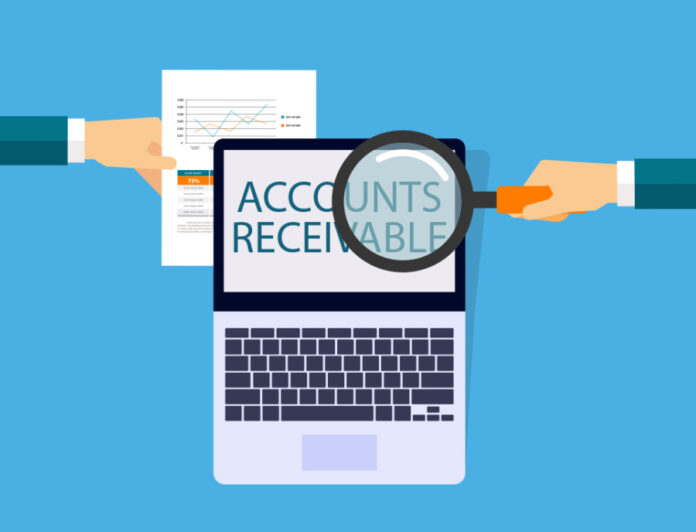Small business owners rely on a healthy cash flow. Without one, expansion and employee retention will prove challenging.
Research shows that one-third of all small business owners cannot pay loans, employees, vendors, or their salaries due to a limited cash flow.
While there are plenty of ways to improve your company’s cash flow, responsibly managing your accounts receivable is one of the most effective.
In this post, we will define what accounts receivable management is and how your small business can perfect it.
What Is Accounts Receivable Management and Why Does It Matter?
Before we share what effective accounts receivable management looks like, let’s define what accounts receivables are.
Accounts receivable, sometimes referred to as AR or A/R, is the money your customers owe for a good or service you’ve already provided.
For example, contractors bill for services once they’re complete. When the contractor submits the invoice to the customer, the invoice amount becomes an account receivable. It is an asset earned but not received.
If not closely monitored, accounts receivable can quickly spiral out of control. On average, small business owners report having nearly $54,000 tied up in AR.
Successful accounts receivable management prevents large accruals by methodically overseeing the entire process. AR management starts when you disclose payment terms to a customer and does not end until said customer pays you for work provided.
Accounts receivable management prevents you from performing services you can’t afford and drastically improves your chances of a return on investments.
Best AR management practices will also minimize the following:
- Risk of not getting paid
- Bad debt write-offs
- Past due accounts
- Time spent on collections
If this sounds like something your small business needs help with, keep reading for six ways your staff can begin practicing AR management.
6 Ways To Improve Your Accounts Receivable Management
There are a few areas small business owners should pay careful attention to when building an efficient accounts receivables management process.
1. Strict Customer Credit Approval
If your small business can afford it, customer credit is an excellent way to set yourself apart from competitors. It also prompts customer loyalty as it shows you trust them.
However, just because you can offer customer credit doesn’t mean you always should. Setting strict eligibility guidelines will reduce your risk of loss.
We know how tempting it can be for small business owners to bend their rules when faced with a big sale or already loyal customer. We caution you of this. The best indication of a credit-worthy customer is their credit.
Once you approve a customer for credit, ensure you clarify and strictly enforce the regulations. Doing so builds your small business’ reputation while decreasing your chances of bad debt from open receivables.
2. Clear and Quick Billing/Invoicing
Properly managing your accounts receivable begins with quick and accurate invoicing. Before providing a good or service, clarify your billing terms so that the customer understands what you expect from them.
Once the service is complete, invoice the customer as soon as possible to prevent delayed payment. The invoice they receive should also have your billing terms printed on them.
It is crucial that your billing team understands these terms and is familiar with any differentials per customer.
For example, if your terms typically allow 30 days before payment, but you’ve lowered it to 15 days for a new account, your staff must know this.
Doing so will lower your risk of loss and maintain your credibility. Keeping all this information in a centralized customer data source prevents confusion.
3. Accurate Customer Master Data
You can be reasonable, understanding, and provide the best customer service known to man—You will still have customers who neglect your billing terms.
When faced with delayed payment, most small business owners call, email, or send a letter to the offending customer. Therefore, it is crucial to maintain accurate customer master data.
Customer master data is a centralized source containing updated information for each customer, such as credit approval, billing terms, buying and paying patterns, and contact information. Many business owners entrust a single staff member with maintaining the source.
Educating your staff on proper data practices won’t only improve customer relations but save you the headache of tracking down late payers.
Customer master data will also help you pinpoint which customers frequently pay late so you can make the best decision for yourself and your business.
4. Cash Application
Cash application is the last step in receivable management. It’s when you apply a customer’s payment to the corresponding invoice.
Accurate cash application and versatile payment options are crucial to improving AR management.
If your software requires manual application, ensure your staff knows how to locate each payment’s invoice. Merely applying a credit to the customer’s account can result in inaccurate payment reminders and destroy customer rapport.
Additionally, offering your customers multiple payment options will decrease how long it takes to receive payment. Traditionally, customers send a check or cash once they receive an invoice.
However, research shows that current consumers are relying on credit, debit, and ACH payment options far more than checks or cash. Studies also show that customers are willing to buy more when they can use a credit card.
5. Prioritize Customer Service
You’re probably thinking, “What does customer service have to do with accounts receivable management?”
Well, the more your customers like you, the more willing they are to pay on time and pay higher. Research confirms that 52 percent of consumers are willing to pay more for excellent customer service.
Not to mention, customer service is the backbone of small businesses as it breeds repeat customers who spend up to 300 percent more than new customers.
On the contrary, small business owners who neglect customer service can throw a wrench in their AR management efforts as 35 percent of unsatisfied customers expect their money back.
In other words, customer service can make or break everything and anything you do as a small business owner, including AR management and cash flow.
6. Automating Accounts Receivable Management
If you’ve gotten this far and are wondering where in the world you’re going to find the manpower to implement an effective AR management system, you’re not alone.
Small business owners don’t struggle to monitor and manage their accounts receivables from a lack of effort but from a lack of resources.
Employees are stretched thin as it is, and hiring someone solely for AR isn’t feasible. That’s why we suggest investing in automated accounts receivable software.
Automated AR software takes the pain out of monitoring payment trends, trying to learn KPIs, hunting down late payers, and the problem-solving that sometimes accompanies cash application.
However, it’s especially advantageous as it frees up time for growth efforts.
Accounts Receivable Management Mistakes To Avoid
Now that you know how to build an accounts receivable management system, let’s discuss a few things you should be careful to avoid.
- Not having an invoice review process: As we learned above, invoicing mistakes delay payment. It also destroys customer rapport, decreasing your chances of ever receiving payment.
For this reason, we recommend putting two pairs of eyes on every invoice before sending it. A review process ensures the prices, terms, and contact information are correct.
- Neglecting payment reminders: Issuing monthly statements to customers with balances is crucial to AR management and minimizing bad debt.
Putting off sending payment reminders tells customers that you don’t need their payment, or you don’t remember that they owe you.
- Accepting every client: Above, we learned that not every customer deserves customer credit. Not every customer deserves service either.
Customers are the backbone of small businesses, so while accepting every new customer is tempting, it may do more harm than good. If a client is demanding or irritated with your pricing right off the bat, consider turning them away as they’ll likely be reluctant to pay.
- Granting complete access to customer master data: While every employee should be able to view the customer master data source, not every employee should be privy to changing the source.
This can result in inaccurate information and issues reaching customers with overdue balances.
- Not prioritizing accounts receivable: This is where most small business owners fail. They treat AR as an accounting issue and spend all their efforts on marketing, customer service, expansion, etc.
However, an abundance of open receivables inhibits these efforts. If you can, make AR a company-wide concern.
Every staff member should be aware of billing terms and current customers’ payment patterns, as well as how they can make efforts to improve AR management.
Before You Go
Accounts receivable management doesn’t have to be a task too daunting for small business owners nor one that falls on a single person.
Because the accounts receivable process ranges from the moment you secure a new customer up to when you accept payment, it can and should be a business-wide effort.
Implementing an effective accounts receivable management system is as simple as reprioritizing and becoming more meticulous or investing in an automated system that assists you.

































